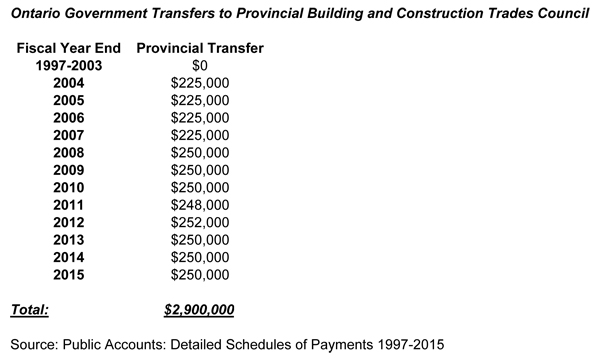Campaign finance reform is finally on the policy agenda, thanks to some enterprising journalism by the Toronto Star’s Martin Regg Cohn and other journalists from other media outlets that have jumped on board. It amazes me that the straw that broke the camel’s back is the fact that cabinet ministers have to meet aggressive fundraising targets. People have complained that the perception of conflict is definitely there, with cabinet ministers favouring those who have attended these pricey functions, and there is some truth to this point.
However, ending corporate and union donations, which is the policy solution being proposed, does not solve the problem. If corporations and unions are not able to donate publicly to political parties, they will do so via third-party finance. To be clear, third-party financing is defined as giving money to a non-political party (a special interest group) and have that interest group advocate for policy objectives that supporters deem important. Americans have long complained about third-party Super PACs distorting their politics. Both Bernie Sanders on the Democrat side and Donald Trump on the Republican side have campaigned against these, citing an entrenched establishment that gets its way on policy as the main source of their discord. Well, we have the same problem in Ontario, and have had it for a long time!
Last fall, I published a blog post that showed some $65 million transferred to the provinces teachers federations by the provincial government. The blog post shut down my web site due to exceeding my bandwidth for the number of downloads. That work is part of a broader research project I am working on that promises to expose how badly we need reforms in political finance in this province.
Let’s be clear: if you think that corporations who attend high priced events for cabinet ministers have favourable policy created for their corporations, do you not think the same thing applies to any of the province’s other organized interests?
Let’s look at the Provincial Building and Construction Trades Council. Its Business Manager is none other than Pat Dillon, the king pin behind the Ontario Super PAC that calls itself the Working Families Coalition. One of the motives of the Provincial Building and Construction Trades Council is to encourage union organization in the building and construction trades. There is nothing wrong with people wanting to organize other people.
Take a look at the table. Prior to 2003, I find no evidence the provincial government transferred any money to the Provincial Building and Construction Trades Council. Since 2004, there are direct transfers totaling almost $3 million. What changed in 2004? I’m sure we’ll get an official explanation, but the organization cannot escape the perception, due to the timing of it, that there may in fact be a quid pro quo of conflict.
Pat Dillon organized millions of pro-labour money to defeat one political party (a political party that was in power in 2o03 and hasn’t been since). He was also a leading advocate for the Ontario College of Trades, which received almost $25 million in provincial transfers. Opponents of the College of Trades have long argued that the organization’s rules lean heavily toward labour where inspectors can go on job sites, request documentation, and use that information for union certification drives. What can possibly be said to alleviate those concerns?
We have been turning a blind eye to all of this in Ontario. It’s been happening in a multitude of sectors since 2003, and the provincial treasury has been used to dish out money to organizations who have a vested political interest to keep the governing party in power. The pro-labour NDP can’t even make a dent in this despite their leader having higher approval ratings than the premier. Political preferences have been skewed against them.
The underlying point in all of this is simple: close corporate and union donation loop holes in the political finance side all you want, but unless you also close third-party finance rules, those corporations and unions will continue to have a place to exert their considerable political influence. This is just another example of how it all plays out.
If we look at what is happening in Quebec, you won’t find the Ontario story dramatically different. The silence is deafening here.





